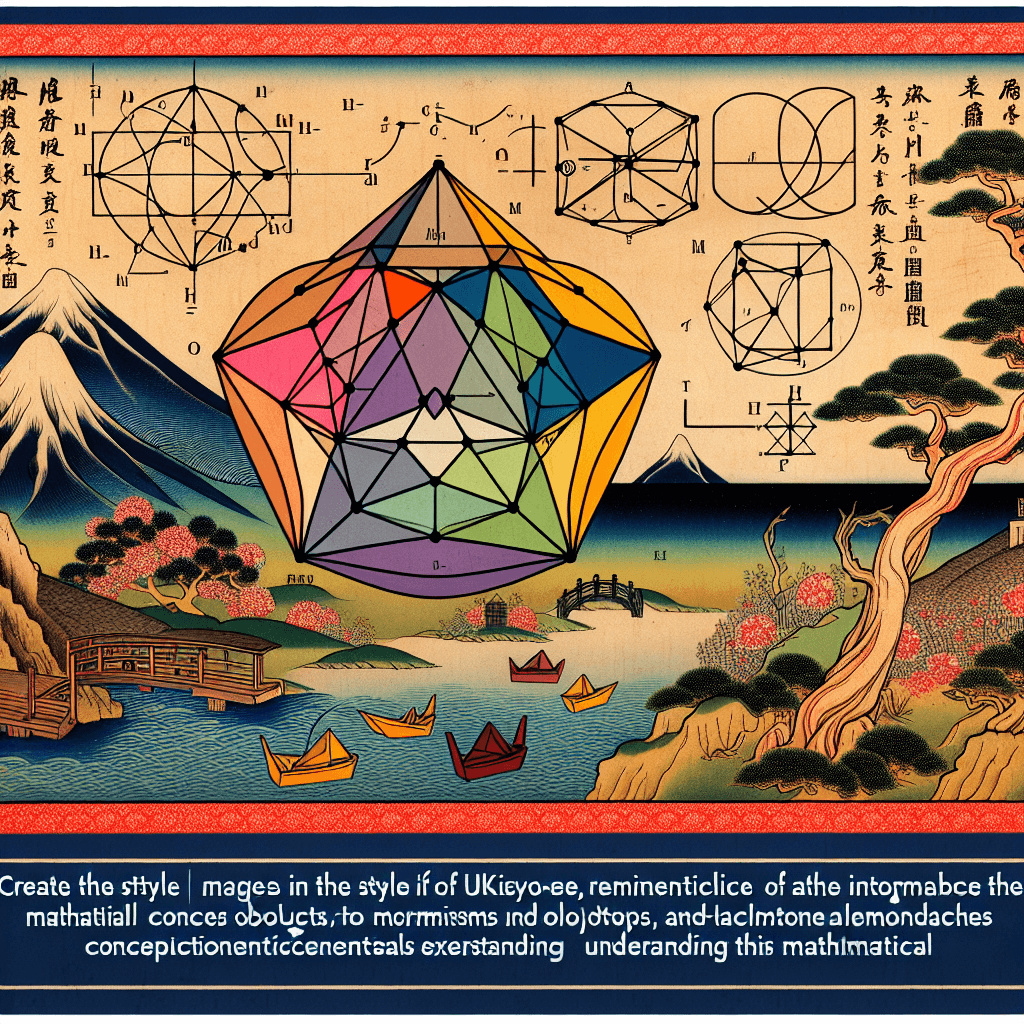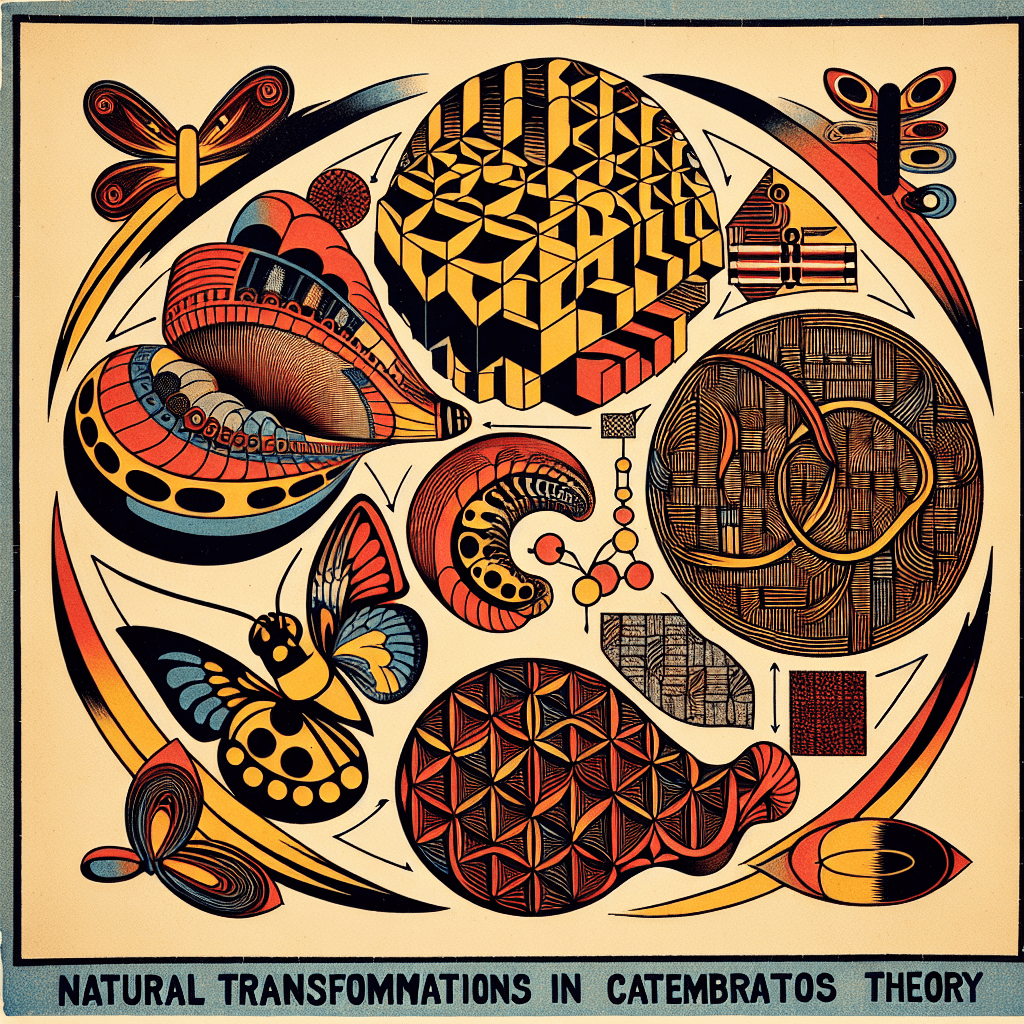Visual Aids for Understanding Category Theory
syndu | Sept. 1, 2024, 9:17 p.m.

Visual Aids for Understanding Category Theory
Introduction
Category theory, often described as "the mathematics of mathematics," provides a unifying framework for understanding and connecting various mathematical structures. To make these abstract concepts more accessible and engaging, we will use visual aids that illustrate the key ideas and metaphors associated with category theory. These visuals will help readers grasp the foundational concepts and their applications across different fields.
Visual Aid 1: Diagram of Cities and Roads (Points Representing Objects)
Description: This diagram represents a category with cities as objects and roads as morphisms. Each city is labeled as an object, and the roads represent the morphisms between these objects.
Visual:

Explanation:
- Cities as Objects: Each city on the map represents an object in the category.
- Roads as Morphisms: The roads connecting cities represent morphisms, showing how one city can be reached from another.
- Points as Representations: The exact location of each city on the map is a point that represents the object.
Visual Aid 2: Origami Folding Sequence (Morphisms and Their Role)
Description: This visual aid shows the sequence of folds (morphisms) transforming the paper from its initial state to the final origami airplane. It includes labeled states and folds to illustrate the connections.
Visual:

Explanation:
- Paper as Objects: Each state of the paper during the folding process represents an object in the category.
- Folding Steps as Morphisms: Each step in folding the paper represents a morphism, showing how one state of the paper can be transformed into another.
- Composition of Steps: The sequence of folding steps represents the composition of morphisms, transforming the paper from its initial state to the final origami airplane.
Visual Aid 3: Lego Building Sequence (Composition of Morphisms)
Description: This visual aid shows the sequence of connections (morphisms) transforming the bricks from their initial state to the final complex structure. It includes labeled bricks and connections to illustrate the process.
Visual:

Explanation:
- Bricks as Objects: Each Lego brick represents an object in the category.
- Connections as Morphisms: The connections between bricks represent morphisms, showing how one brick (object) can be connected to another.
- Composition of Connections: The sequence of connecting bricks represents the composition of morphisms, building a complex structure from simpler components.
Visual Aid 4: Translator Mapping (Functors)
Description: This visual aid shows the translator (functor) mapping books (objects) and translations (morphisms) from one language (category) to another. It includes labeled books and translations to illustrate the connections.
Visual:

Explanation:
- Books as Objects: Each book represents an object in a category. The content of the book remains the same, but the language in which it is written changes.
- Translations as Morphisms: The act of translating a book from one language to another represents a morphism. The translator ensures that the meaning and structure of the content are preserved.
- Translator as Functor: The translator represents the functor, mapping each book (object) and its translation (morphism) from one language (category) to another while preserving the structure and meaning.
Visual Aid 5: Bridge of Natural Transformations
Description: This visual aid shows the commutative property of natural transformations, ensuring that the sequence of transformations respects the structure of the objects and their relationships.
Visual:

Explanation:
- Roads as Functors: Imagine two parallel roads representing the functors \( F \) and \( G \). Each point on the roads represents an object in the categories.
- Bridges as Natural Transformations: The bridges connecting points on the parallel roads represent the natural transformations \( \eta \). These bridges ensure that the structure and relationships between points (objects) are preserved.
Visual Aid 6: Puzzle Metaphor (Limits and Colimits)
Description: This diagram highlights the colimit as the blueprint of the puzzle, providing the most general way to assemble the pieces while preserving the overall structure.
Visual:

Explanation:
- Puzzle Pieces as Objects: Each piece of a puzzle represents an object in a category.
- Connections as Morphisms: The connections between puzzle pieces represent morphisms, showing how one piece can be connected to another.
- Limit as the Completed Puzzle: The limit represents the completed puzzle, where each piece fits together in the most specific way to form a coherent whole.
- Colimit as the Blueprint: The colimit represents the blueprint of the puzzle, providing the most general way to assemble the pieces while preserving the overall structure.
Visual Aid 7: Assembly Line (Monoids and Monoidal Categories)
Description: This visual aid shows how monoids and monoidal categories organize and process objects and morphisms.
Visual:

Explanation:
- Monoids as Assembly Lines: Each station in the assembly line represents a step in the process, analogous to a monoid operation.
- Objects as Products: The objects being processed on the assembly line represent the elements of the monoid.
- Morphisms as Operations: The operations performed at each station represent the morphisms in the monoidal category.
Conclusion
These visual aids provide a powerful way to visualize and understand the abstract concepts of category theory. By using metaphors and visual representations, we can make these ideas more accessible and engaging.
This foundational understanding is crucial for exploring more advanced topics in category theory and its applications across various fields.
Next Steps for Blog Series
To delve deeper into category theory, we will continue our blog series with the following topics:
- Natural Transformations: Connecting Functors
- Limits and Colimits: Universal Properties in Categories
- Monoids and Monoidal Categories: Algebraic Structures in Category Theory
- Conclusion: The Power of Category Theory and Godai Metaphors
Action Items
- Research and Understand the Topic: Gain a deep understanding of each specific topic.
- Draft the Blog Post: Write detailed and engaging content using metaphors and visual aids.
- Create Visual Aids: Develop visual aids to illustrate the concepts.
- Generate a Captivating Title: Create an informative and intriguing title.
- Review and Edit: Proofread and edit for clarity and correctness.
- Publish and Promote: Publish the blog post and promote it to reach the target audience.
Goal: To create a comprehensive and engaging content series that attracts and inspires readers, encouraging them to explore category theory through relatable and visual metaphors.
Promotion Plan
- Social Media: Share the blog post on platforms like Twitter, LinkedIn, and Facebook with engaging captions and relevant hashtags.
- Newsletters: Include the blog post in the next edition of our newsletter to reach our subscribers.
- Online Communities: Post the blog link in relevant forums and communities such as Reddit, Stack Exchange, and specialized category theory groups.
- Collaborations: Reach out to influencers and experts in the field to share the blog post with their audience.
- SEO Optimization: Ensure the blog post is optimized for search engines to attract organic traffic.
By following this plan, we aim to maximize the reach and impact of our blog post, engaging a wide audience interested in category theory and its applications.
